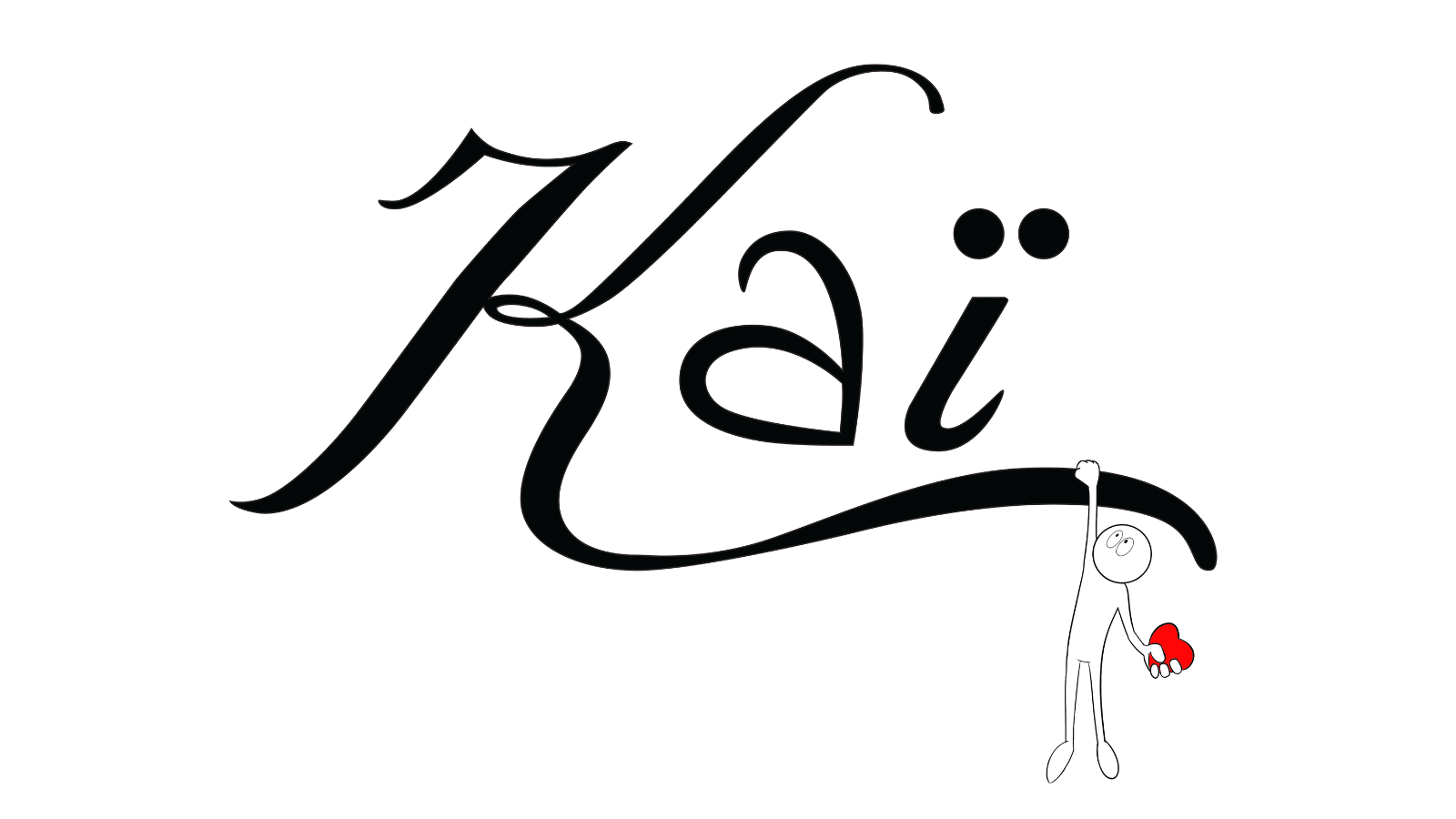
¡Hola de nuevo!
If you’ve been following us on IG or TikTok, you’ve retraced some of our work in Puebla. But, here’s the full story.
In the height of Covid, mid-2020, the world had gone still. Flights were grounded, borders closed, and studios silent. Then my phone rang.
It was a collector from Puebla, Mexico. And, his words hit like a thunderclap:
“Kai, I need you to install and finish that sculpture now. Find a team. Fly to Mexico. Finish the sculpture.”
He said it like it was the most natural request in the world. Except it wasn’t. No one was working. No one was flying. But, if you know me, you know I’ll always go the extra mile for my collectors and my work — sometimes even when the world says it’s impossible.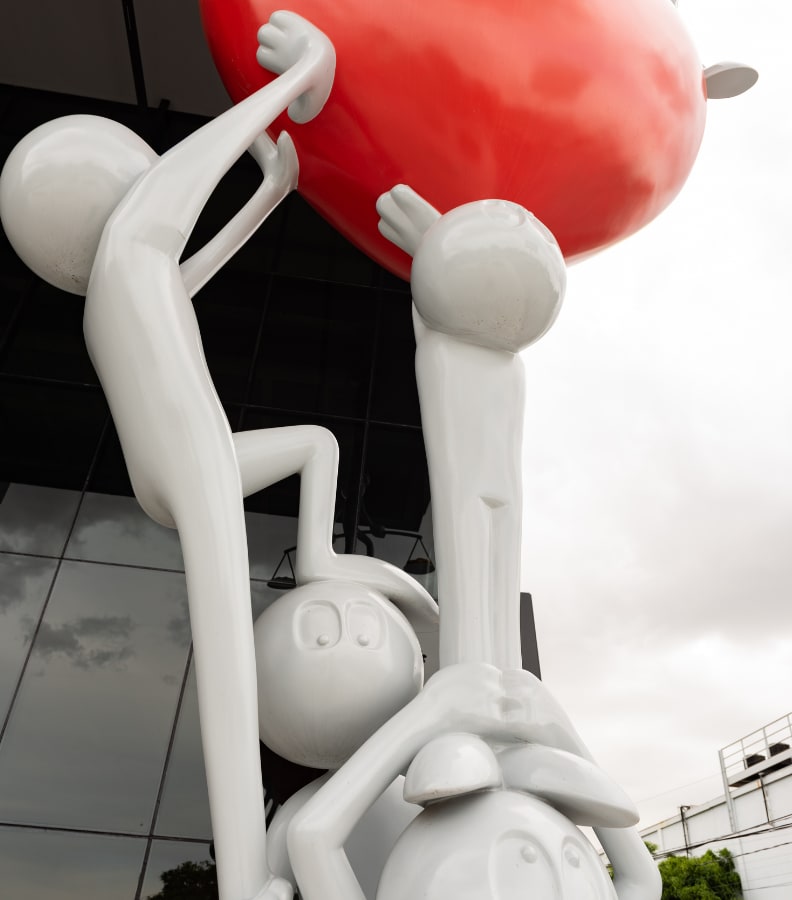
To understand how we got here, let’s rewind a year earlier.
In 2019, I received an email from Valdez Arquitectos, an architectural firm in Puebla. They wanted me to paint a mural on one of their new buildings — bonus detail, the legendary “London Police” would also be painting at the same site. A dream gig.
I assembled the crew: Jazz, Julian, Ray, Matt, Ernest, and myself. We flew to Mexico, where a small SUV fleet picked us up for the four-hour drive from the airport. We knew right away this trip was going to be an adventure.
The project was as thrilling as it was chaotic.
A lift caught on fire while I was standing on it.
A tree had to be planted in the middle of the work.
Wooden cut-outs were suddenly added.
But, when the dust settled (literally and figuratively), the mural stood proud — a Kai piece bathed in pink, a color quickly becoming my trademark. We left Puebla not just with paint on walls, but with friendships forged.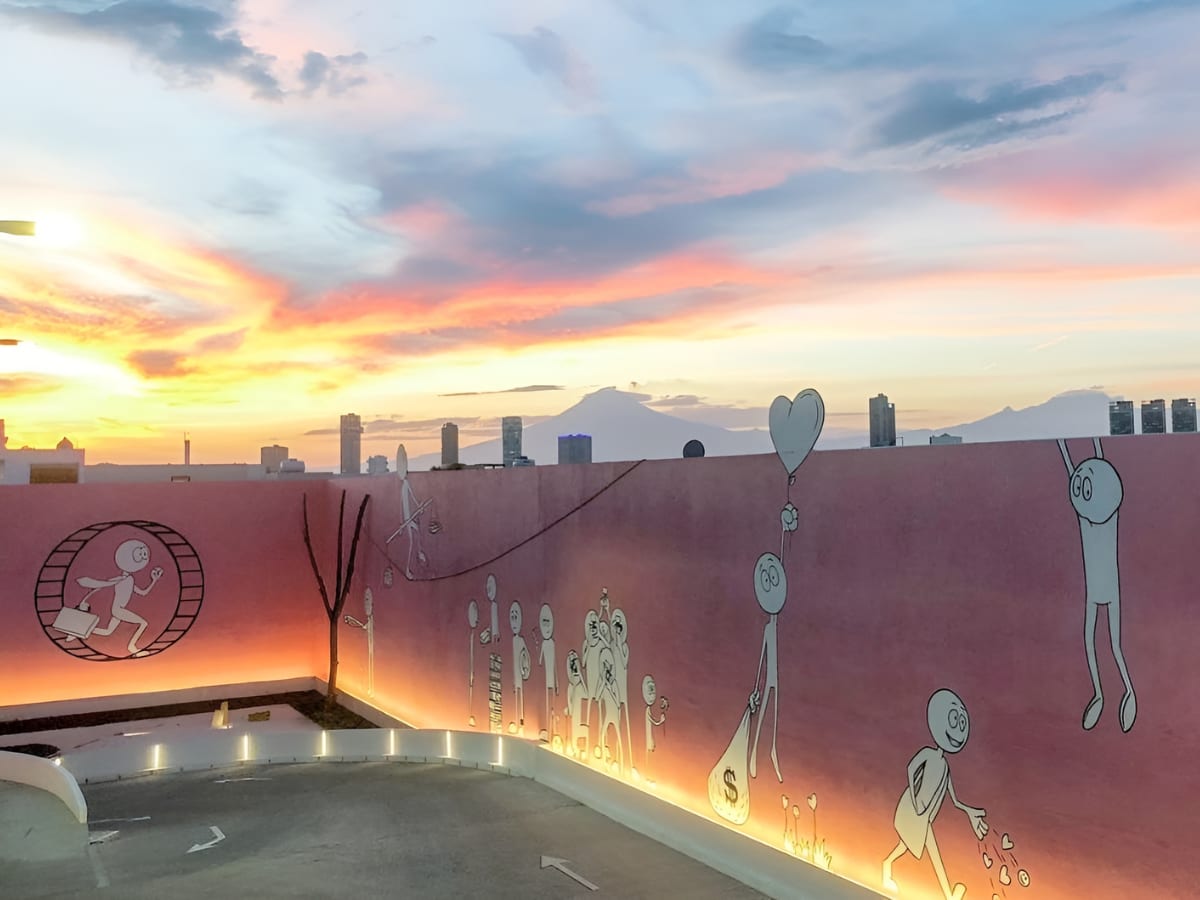
Months later, my architect contact Fernando called.
“Kai, that collector wants me to design another building,” he said. “Do you have any ideas?”
I remembered something collector Juan Pablo Kuri once shared: “Puebla is one of the most visited city in Mexico without a beach.” He loved his city and wanted to give it something special.
“Let’s give Puebla its ocean,” I replied. “Let’s make the building a wave.”
That’s what we did — a structure with a sweeping ceiling that felt like a rolling tide.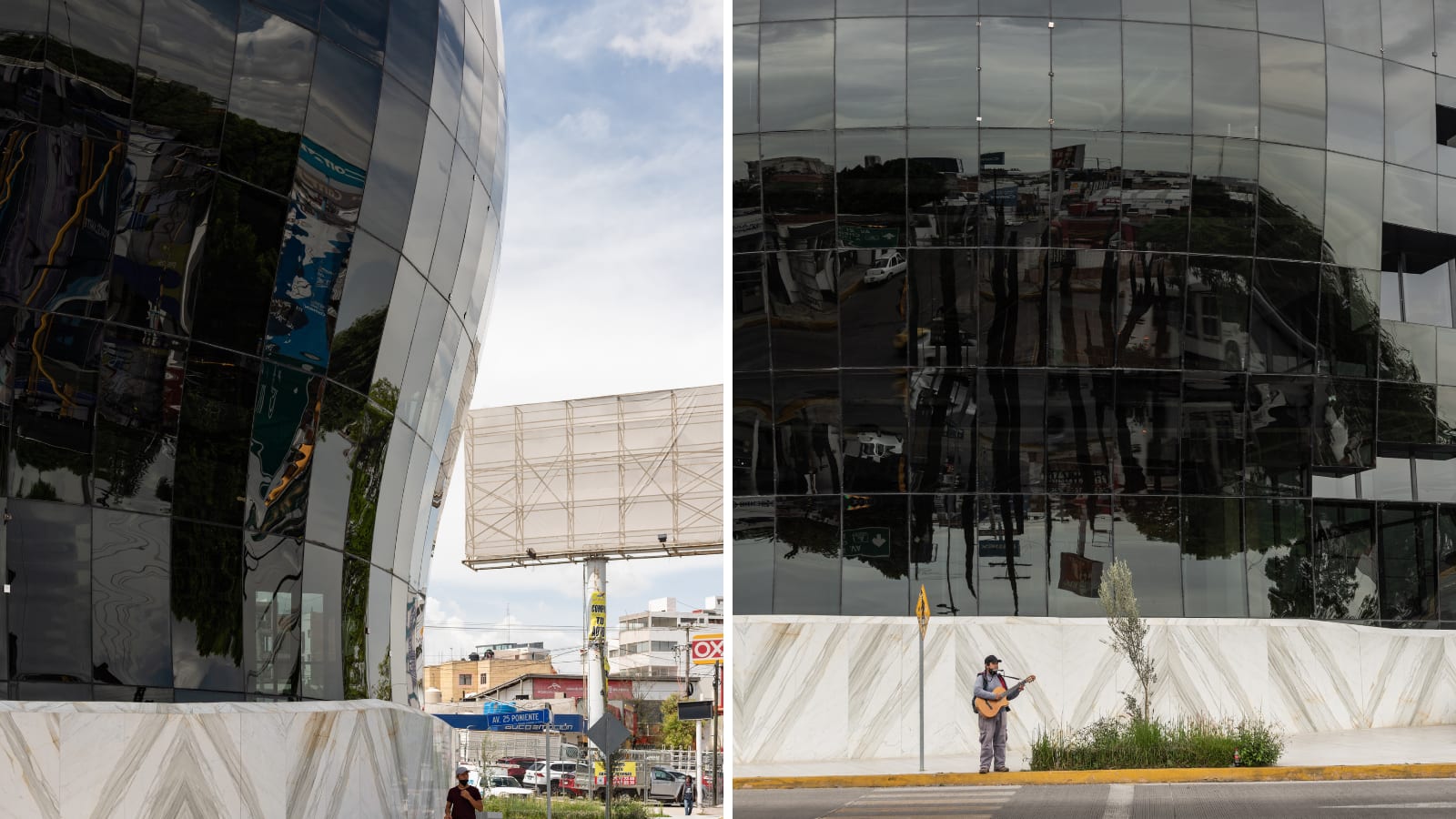
But, that wave required a massive column for support. And Juan Pablo and Fernando had a wild idea.
“Kai, what if the column wasn’t just a column… what if it was a sculpture?”
I said yes without hesitation. Never mind that I had no clue how to make a sculpture that was both beautiful and structural.
The concept became a meditation on love. A character carrying hearts, showing how we carry our loved ones first. A character seated on a heart with a flower — an early spark for what later became “Love Me, Love Me Not” and “The Balancing Act,” the eternal tightrope between love and success.
It was no longer just art. It had to hold up a building. Earthquakes, fires, wind loads. Every possibility had to be engineered in. I called my friend Jerry, who told me to treat the concept like a sketch, then hand it to engineers to translate into physics.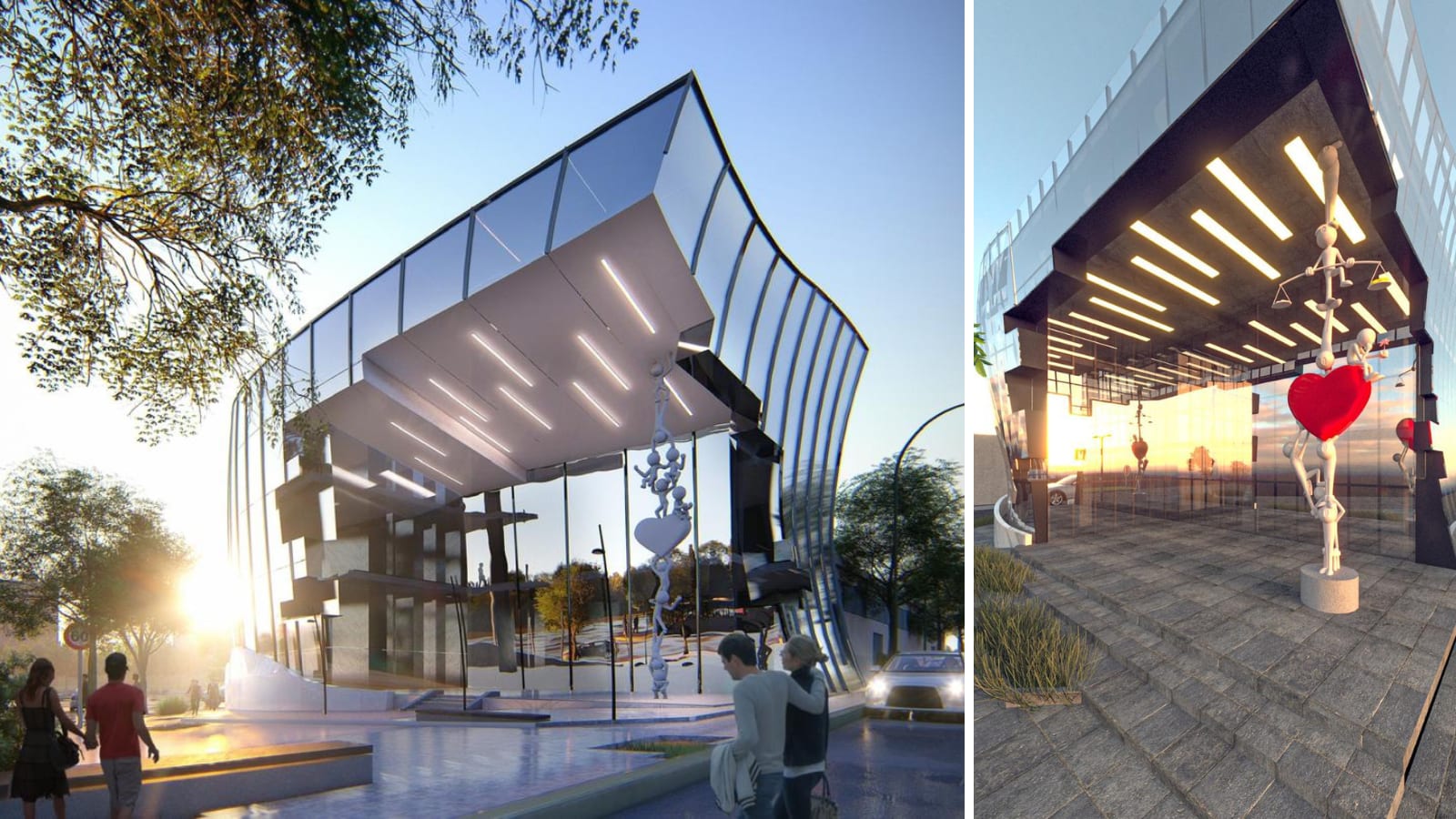
We worked through every problem. The sculpture had to be one giant piece, but that meant we couldn’t transport it. So, we split it into sections, engineered ways to reconnect them, and pressed forward.
Twenty-four months of grinding work. And just as we neared 90-percent completion, the pandemic hit.
Months into lockdown, Juan Pablo called with that impossible request:
“Finish it. Fly here. Install it.”
I reassembled the most fearless team I knew, and we boarded a plane to Mexico.
The sculpture waited in the building’s parking garage.
First problem? Getting it out. The slope was too steep, like a kid stuck between fenceposts. Two days of struggle, but we freed it.
“That was the hard part!” our team cheered. “Smooth sailing from here.”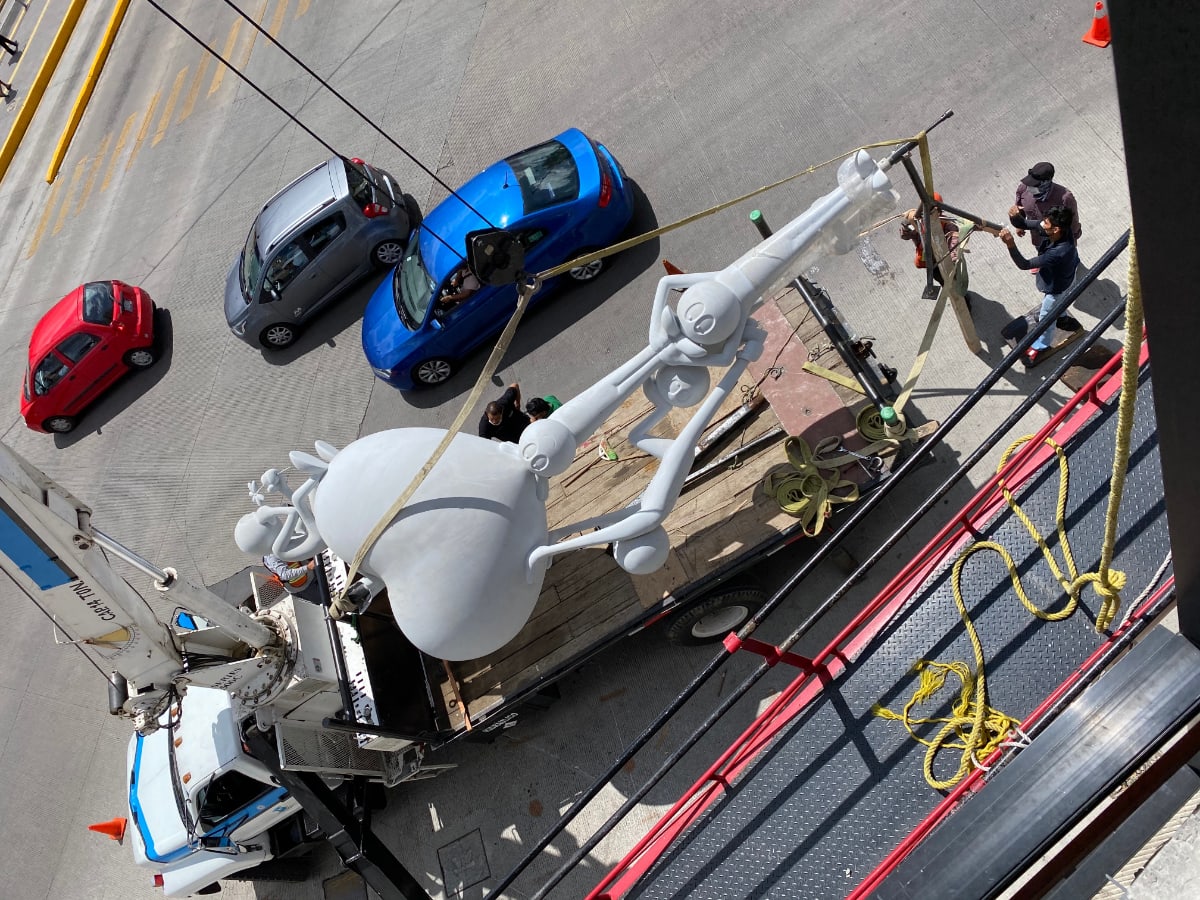
If they only knew.
We reassembled the sculpture and prepared for the biggest test: installation. Two cranes were lined up. We even rehearsed the maneuver the night before using drinking straws at dinner.
Reality laughed. The top crane couldn’t fit; the ceiling clearance was too tight.
The only solution? Cut a hole in the ceiling. We did.
And, finally, the sculpture locked into place.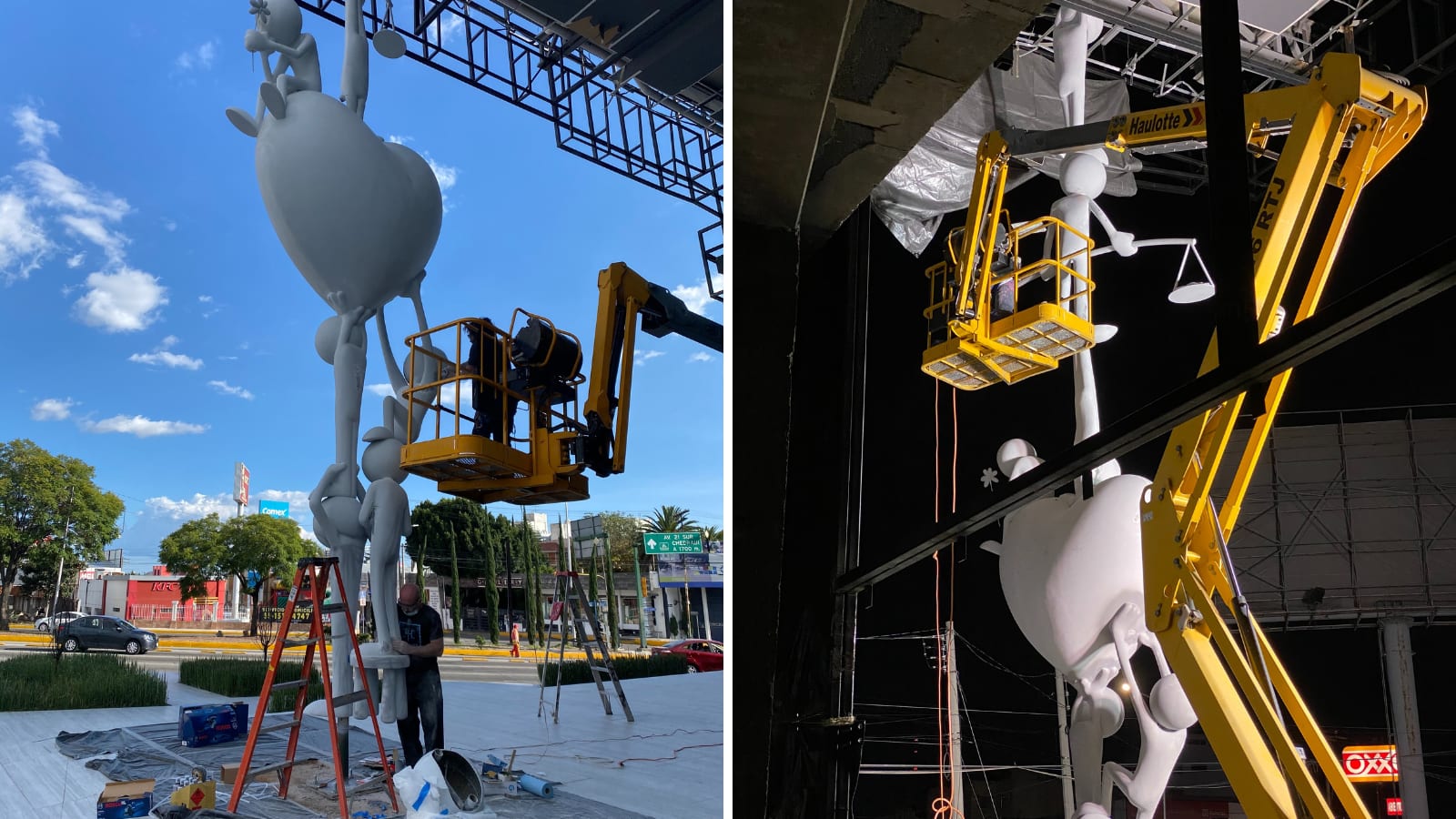
Or, so we thought.
As we sanded and prepped for paint, the architect pulled me aside. Once hundreds of custom windows were installed, their sheer weight would sink the building several centimeters. The sculpture would punch straight through the roof.
All our work was at risk.
Then I remembered: we had engineered a sleeve to flex during earthquakes.
Could it flex once, deliberately, to lower the sculpture? Only one way to know. We welded a car jack to the sleeve, cut the outer ring, and the site fell silent. As the jack groaned, the sculpture sank. Seconds felt like hours until… BOOM … it clicked perfectly. No cracks. No failures. The engineering had worked.
Then came the final stretch. What we thought would take three days stretched into ten. We ran double shifts. I stayed until 3 a.m. Came back at 6 a.m.
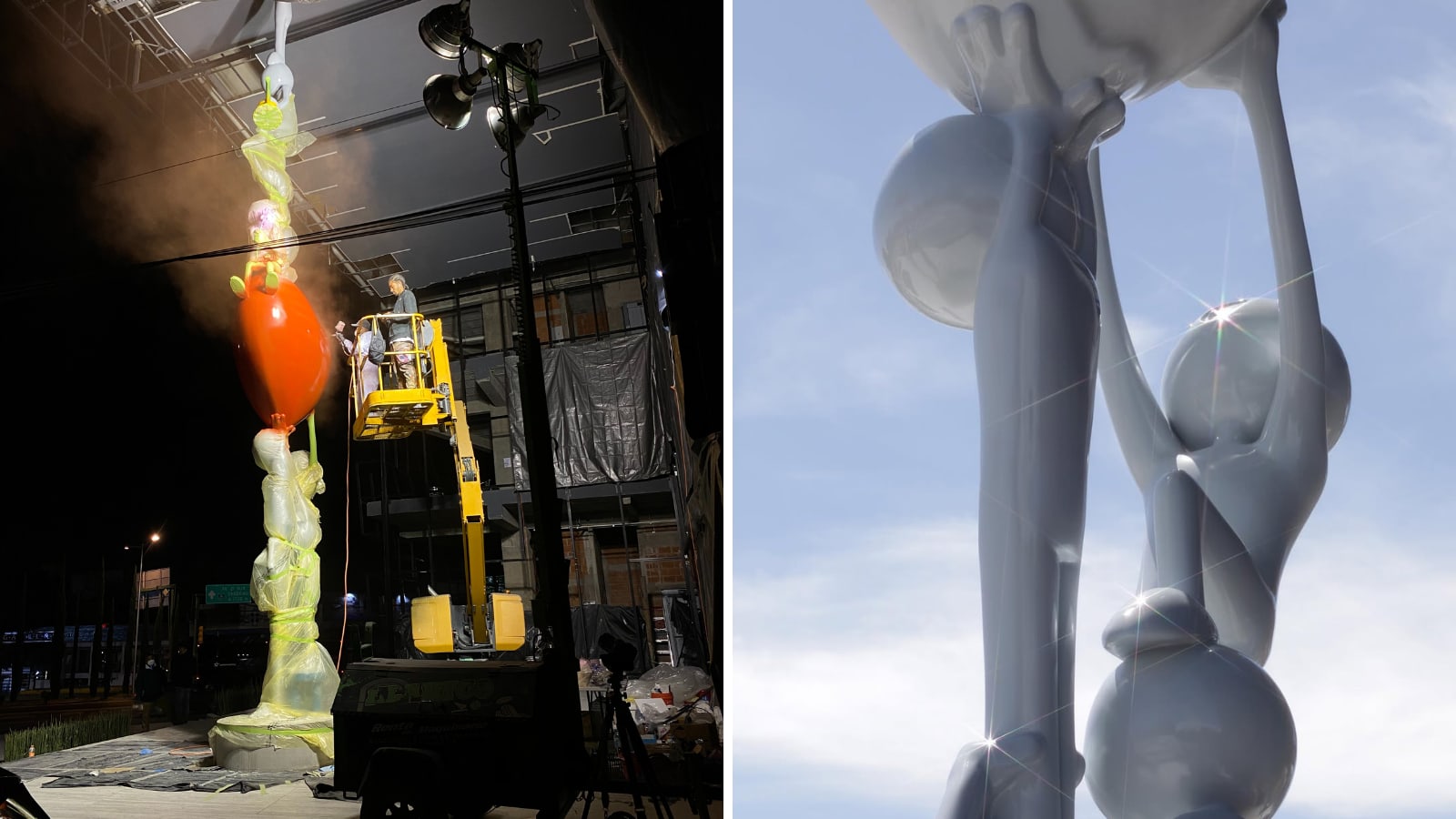
Paint was the victory lap. First, bursts of color. Then reverse masking to spray the characters in ghostly grey. Last came the heart, painted in the final hours before our flight, the team working in the dark to finish.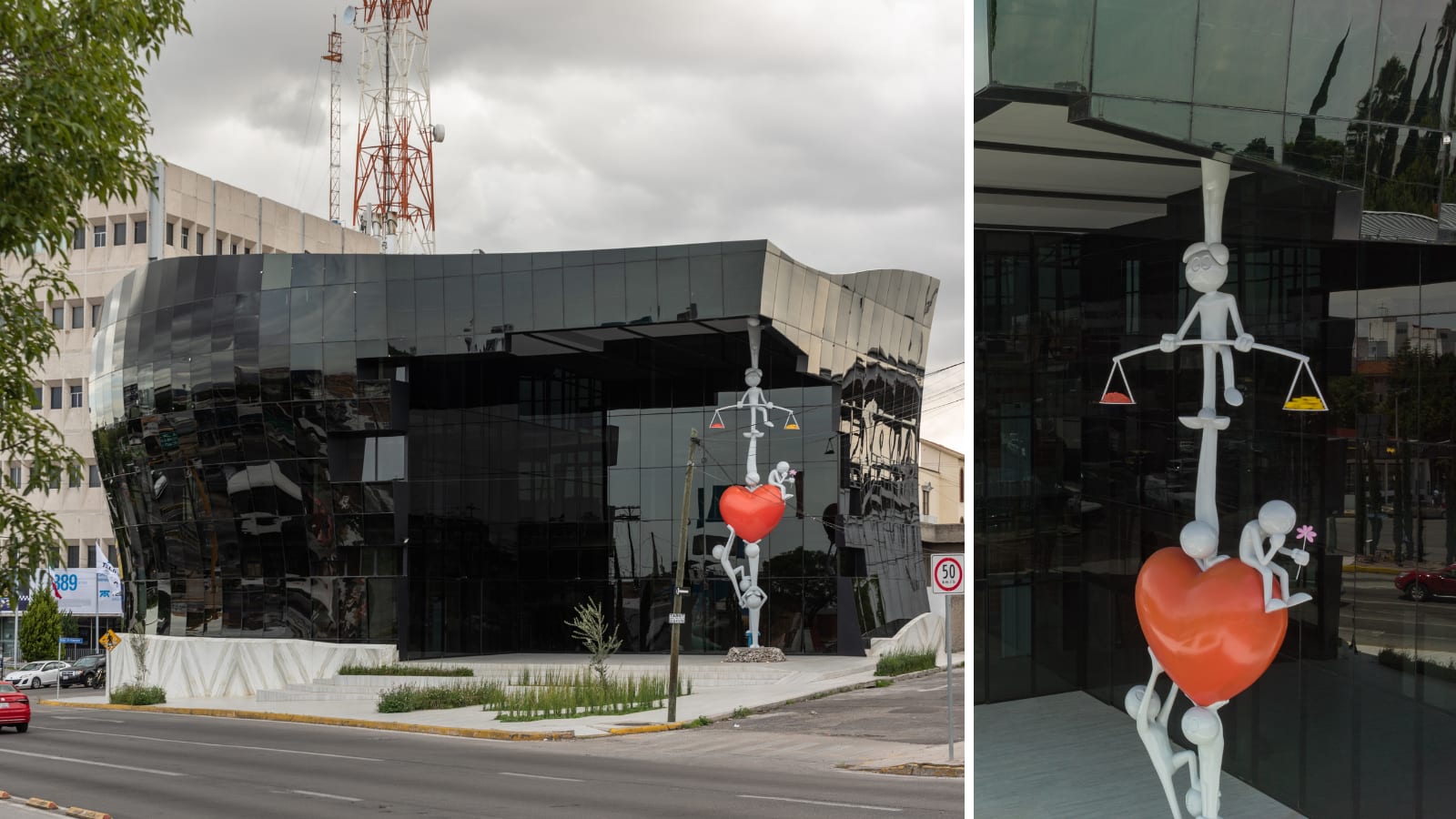
At more than 11.5 meters tall (36+ feet), “Love Pillar” was the largest piece I had ever created.
Functional, whimsical, unforgettable. Exhausted and covered in paint, I knew this was a story we’d carry forever.
And, here we are today — revisiting this timeless adventure as we look ahead to the next one.
Until then! Stay up,
